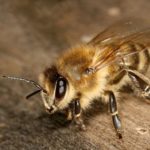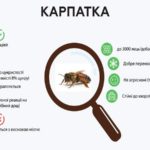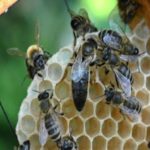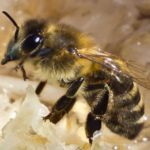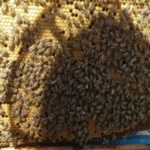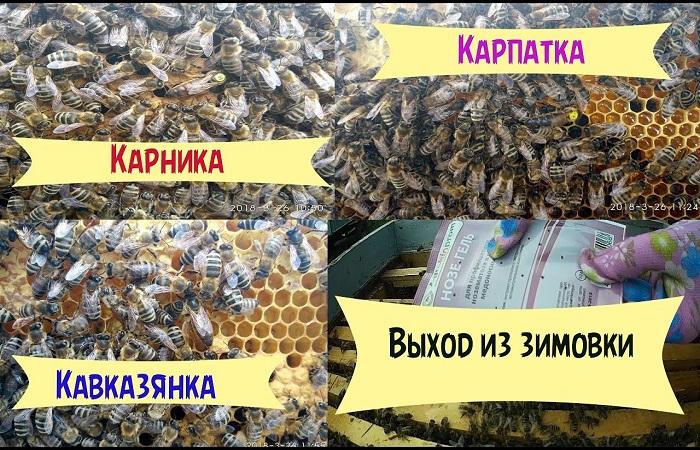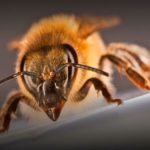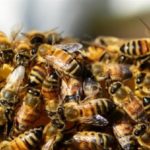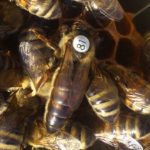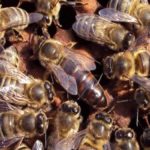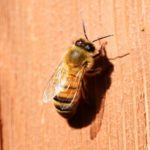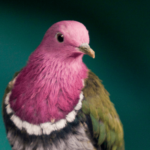The productivity of an apiary and the quality of honey directly depend on the breed of bees being bred. Each variety of honey insects is accustomed to living in certain climatic conditions, and it is in these conditions that it will be most comfortable. The Karnika or Karpatka bee breeds were bred in the foothills of the Carpathian Mountains and the Alps, but what is better to breed in your own apiary, we will look into the details further.
Description of Karpatka
In the natural environment, this breed of bees is found in the western regions of Ukraine, namely in the Carpathians. The habitat of the carpathian moth has been declared a protected area, and the import of other species of honey-bearing insects there is prohibited.
In the middle of the last century, scientists carried out breeding work, as a result of which the breed was improved and several varieties were developed:
- the Maikop bee is characterized by a yellowish tint;
- Rakhiv Carpathians are painted silver;
- The common carpathian differs from its relatives by a grayish tint.
The honey minke whales of this breed are very hardy and easily take root in various weather and climatic conditions.
- The oviparous queen is large, reaching a mass of up to 2.6 g; the barren female weighs slightly less, up to 2.1 g.
- The color of the female varies from dark cherry to black.
- The breed is not aggressive, is not subject to swarming, and calmly allows a beekeeper to inspect the nest.
- The queen can produce up to 2 thousand fertile eggs per day.
- With proper care, the breed is resistant to major diseases and pests, but requires treatment against wax moths.
- The proboscis is long, reaching a size of up to 7 mm, which allows insects to obtain nectar from any honey plants.
- The productivity of Karpatka is high. Each family brings up to 40 kg of valuable and useful product per season.
Important! Karpatka is unpretentious to external living conditions; worker bees fly out of the hive in any weather and are not afraid of increased moisture and low air temperature.
Features of Karnika
The bee breed was bred in the Alpine mountains, so the insects take root well throughout the European continent. Karnika is unpretentious to weather and climatic conditions and easily tolerates winter with moderate frosts.
- The insects are characterized by a brown color with small dark and light spots; the top of the bees' body is covered with silvery fibers.
- The proboscis is long, reaching a size of up to 6.7 mm.
- Worker bees are small, weighing up to 1 g; drones reach a size of up to 2.3 g.
- The fertile queen is dark brown in color with yellow stripes, weighs up to 2 g, and the barren female weighs up to 1.8 g.
- The queen can produce up to 2 thousand fertile eggs per day.
- To start laying, it is enough for the air temperature to warm up to only +5 degrees, so by the time nectar collection begins, the family is fully formed and gaining strength.
- The breed is resistant to frost; no additional insulation of the hive is required if the air temperature does not drop below -20 degrees.
- Karnika rarely gets sick and is affected by harmful parasites, but in winter it requires timely protection from nosematosis.
- The productivity of insects is very high. During the season, each family produces up to 43 kg of valuable product.
Important! Bees of this breed produce very little propolis and do not take bribes from sunflowers and heather plant varieties.
Comparison of bees
To choose the right breed of bees for your apiary, you need to compare all the advantages and possible disadvantages of insects.
| Breed | Advantages | Flaws |
| Karpatka | v do not show aggression;
v not prone to swarming; v adapted to different weather and climatic conditions; v rapid development of the family; v they fly out for a bribe in rainy, cloudy and cool weather; v after winter rest there is a small percentage of death; v they collect nectar when honey plants are in poor flowering; v characterized by natural immunity to various diseases and harmful insects; v in the process of life they produce a large amount of beekeeping by-products. |
v breeding in steppe regions is not recommended;
v additional treatment of the hive against wax moths is required; v if the bribe is insufficient, they steal honey from other nests. |
| Karnika | v not prone to aggressive behavior;
v quickly adapt to unfamiliar conditions; v they can easily endure harsh winters; v working individuals are long-lived; v do not steal nectar from other people's hives; v suitable for breeding in large populated areas; v after wintering there is a minimum amount of death; v perfectly tolerate transportation over long distances.
|
v the breed is prone to unplanned swarming;
v insects do not tolerate heat and drought well; v the queen does not differ in color from the bulk of her brothers, which causes difficulties in her identification. |
Important! Both breeds of honey insects are characterized by high performance and productivity, as well as excellent natural immunity to various lesions.
Which is better?
There is no clear answer to the question of which bee breed is better. Insects should be purchased based on the capabilities and needs of the apiary, the climatic and weather conditions of the bee breeding region.

